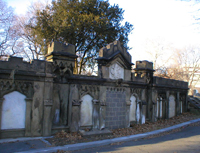Map Controls
- Reset the map
- View Trailheads
- View Trail Towns
- View Places to Visit
Map Legend
- Trailheads
- Trail Towns
- Places to Visit
- Schuylkill River Trail (SRT)
- On-Road SRT
- Proposed SRT
- Proposed On-Road SRT
Plan Your Trip
USING THE MAP
The Schuylkill River Greenways map is divided by Trailheads, Trail Towns and Places to Visit.
- Click on the category of your choice and a dropdown list of content will appear. Click any of the options within the dropdown menu and additional content will appear. Or, click on the “Places to Visit” category to see all available activities along the trail.
- Another way to navigate the map is to rollover the icons on the map. The preview will show you what kind of item it is. Click on it to reveal more information.
- Use the quick links at the top left to filter through Trailheads, Towns, and Places to Visit.
Trailheads/Parking
Trail Towns
Places to Visit
The Woodlands


The Woodlands features one of the most architecturally significant mansions in America, its Carriage House, and an active Rural Cemetery which was incorporated in 1840. The pathways and avenues of the cemetery and mansion comprise the Woodlands Heritage National Recreation Trail. The entire property is a National Historic Landmark.
The story began in 1734, when noted lawyer Andrew Hamilton purchased a 250-acre tract of land on the outskirts of Philadelphia. The land holdings were inherited in 1747 by Hamilton’s grandson, William, an avid botanist who also had a passion for architecture and landscape design. Here, William Hamilton created one of the finest landscape gardens of its day and introduced many exotic plants. His mansion and stable, built 1787-92, are early examples of the neoclassical Adamesque-Federal style. In 1840 the estate became one of the first large rural cemeteries in America.
In 1805 Lewis and Clark shipped trunks of specimens from what is now North Dakota back to President Thomas Jefferson. An avid gardener, Jefferson had a special interest in the botanical specimens contained in the trunks. He sent dried specimens of plants to Benjamin Smith Barton and the packets of seeds and cuttings of the Osage orange, gooseberries, and Ariskara tobacco to Philadelphia’s William Hamilton.
Today visitors may enjoy an educational tour of this beautiful building and grounds, including internationally renowned gardens and plant collections, and the Cemetery. The bodies of many noteworthy Americans are interred at the Woodlands. To mention a few: Joseph Campbell, founder of the Campbell Soup Company; noted artist, Thomas Eakins; Ebenezer Maxwell, whose mansion stands as a museum in Germantown; and Civil War general, John Joseph Abercrombie.
- National Historic Landmark
- National Register of Historic Places
- National Recreation Trail
- Reservations Required/Recommended